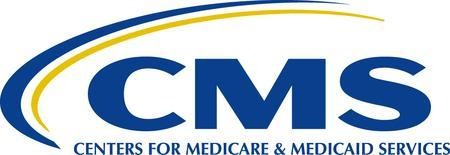Mother and Infant Home Visiting Program
Evaluation (MIHOPE)
Informing the Future of Home Visiting
Understanding “How”: A Spotlight on Home Visiting Service Delivery
An exciting aspect of the Mother and Infant Home Visiting Program Evaluation (MIHOPE) and MIHOPE-Strong Start projects is the examination of how home visiting services are implemented. Often evaluations look at program results (outcomes) without examining state and local choices that affect how those outcomes are achieved. MIHOPE and MIHOPE-Strong Start put the spotlight on how home visiting services are delivered as part of the implementation study.
According to the National Implementation Research Network at the University of North Carolina, implementation is “a specified set of activities designed to put into practice an activity or program of known dimensions.” In other words, it is how a program works on the ground. Program model developers have designed home visiting programs and developed manuals and tools to support how they are delivered. Home visitors, supervisors, and program administrators use these manuals and tools to guide their work with families. In addition, state and local program administrators make decisions that affect how these pieces fit together. All of these factors contribute to how the program is actually experienced by participants. So far, no large-scale study has taken a close look at how implementation is connected to outcomes or considered implementation across multiple home visiting models.
MIHOPE and MIHOPE-Strong Start will answer the following big-picture implementation questions
- How do programs actually operate?
- How is each evidence-based service model defined by its developer?
- How do local home visiting programs specify or adapt their service models relative to the national models with which they are affiliated?
- What services do families receive (the amount, the content covered, and the quality of services)? How does this vary for families with different characteristics?
- What features of the local programs or their communities seem to influence the kinds of services that families receive? What can we learn from these patterns and their connections with program impacts, to help strengthen home visiting programs in the future?
To answer these questions, the research team is: (1) conducting interviews with model developers and reviewing program documents, (2) interviewing state officials or intermediaries involved in technical assistance and in setting policy and/or program outcomes, (3) surveying staff at the local sites, (4) collecting information about the number and content of home visits, and (5) observing home visits. The study team will also look at:
- policies and procedures for staff recruitment, training, supervision, and evaluation
- assessment tools, protocols, and curricula to guide service delivery
- administrative supports, such as management information systems, to promote staff adherence to the model
- available consultation to address issues beyond the home visitors’ skills and expertise
- the programs’ relationships with other organizations to facilitate referral and service coordination
- neighborhood characteristics
- the characteristics of staff and families served
This mixed-method review will give a comprehensive picture of what home visiting looks like in the MIHOPE and MIHOPE-Strong Start sites. All of these sources of information will help the study team better understand how the decisions made by local programs and home visitors influence service delivery. This analysis will inform future efforts to scale up home visiting programs.
Finally, MIHOPE and MIHOPE-Strong Start will examine the intersection of impacts and implementation to shed light on a key question: How do home visiting programs using these evidence-based models achieve their results? For example, the studies will assess how the number of home visits a family receives relates to outcomes and how activities like staff training and supervision influence the content of the home visit. By shining a spotlight on implementation, these studies will provide a wealth of new information about how efforts on the ground lead to positive outcomes for families.
Sources:
Charles Michalopoulos, Anne Duggan, Virginia Knox, Jill H. Filene, Helen Lee, Emily K. Snell, Sarah Crowne, Erika Lundquist, Phaedra S. Corso, and Justin B. Ingels. (2013). Revised Design for the Mother and Infant Home Visiting Program Evaluation. OPRE Report 2013-18. Washington, DC: Office of Planning, Research and Evaluation, Administration for Children and Families, U.S. Department of Health and Human Services.
Jill H. Filene, Emily K. Snell, Helen Lee, Virginia Knox, Charles Michalopoulos, and Anne Duggan. (2013). The Mother and Infant Home Visiting Program Evaluation-Strong Start: First Annual Report. OPRE Report 2013-54. Washington, DC: Office of Planning, Research and Evaluation, Administration for Children and Families, U.S. Department of Health and Human Services.





